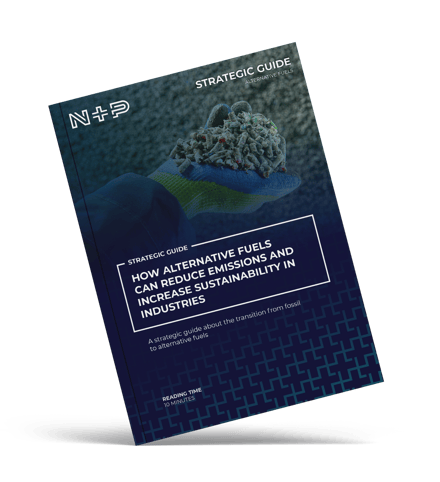The use of PAF in industries
Pulverized Alternative Fuels: a sustainable way to generate energy
Pulverized Alternative Fuels (PAF) have gained significant attention as a sustainable solution for energy generation. PAF refers to a range of waste-derived materials that are pulverized into fine particles and used as a substitute for traditional fossil fuels. This article explores the concept of PAF, its production process, and the environmental benefits it offers.

The production process of pulverized alternative fuels (PAF)
The production process of PAF involves several key steps to convert waste materials into a viable fuel source:
- Waste Selection and Sorting: Various waste materials, such as biomass, agricultural residues, and recycled materials, are carefully selected and sorted. This step ensures that the chosen materials meet quality and compatibility criteria for efficient combustion.
- Preparation and Pulverization: The selected waste materials undergo preprocessing, including drying and shredding, to achieve the desired particle size. Subsequently, the materials are pulverized into fine particles using specialized equipment, resulting in a homogeneous fuel mixture.
- Quality Control and Treatment: Rigorous quality control measures are implemented to ensure consistent fuel quality. The PAF may undergo further treatment processes to optimize its characteristics, such as reducing moisture content and enhancing its energy content.
Key benefits of Pulverized Alternative Fuels
By leveraging the benefits of Pulverized Alternative Fuels, industries can achieve a greener and more sustainable future. PAF not only offers environmental advantages but also brings economic and social benefits, creating a positive impact on both the bottom line and the well-being of communities. PAF offers several notable advantages as an alternative fuel source:
- Environmental Sustainability: By utilizing waste materials as fuel, PAF significantly contributes to waste reduction and minimizes reliance on finite fossil fuel resources. This approach helps mitigate greenhouse gas emissions, reduce landfill usage, and promote a circular economy.
- Renewable Energy Generation: PAF provides a renewable energy source that can replace or supplement traditional fossil fuels. Its combustion in power plants and industrial facilities helps diversify the energy mix, decreasing dependence on fossil fuels and reducing carbon emissions.
- Cost-Effectiveness: PAF offers a cost-effective solution compared to conventional fuels. As waste materials are often available at lower costs or even free, businesses can achieve substantial savings on fuel procurement. Additionally, government incentives and subsidies may be available to support the adoption of PAF.
- Flexibility and Compatibility: PAF exhibits a high degree of flexibility and compatibility with existing combustion systems. It can be used in various applications, including power generation, cement production, and industrial heating. The versatility of PAF enables seamless integration into existing infrastructure without, in most cases, significant modifications.
Applications of Pulverized Alternative Fuels
PAF finds applications in several industries seeking sustainable energy solutions:
- Power Generation: Pulverized Alternative Fuels can be co-fired with coal or used as the primary fuel in power plants. This application reduces the environmental impact of electricity generation, promotes cleaner energy sources, and helps meet renewable energy targets.
- Cement Production: PAF can be utilized as a substitute for traditional fossil fuels in cement kilns. By using PAF, cement manufacturers can reduce carbon emissions and enhance the sustainability of their operations while maintaining the required high temperatures for efficient cement production.
- Industrial Heating: Industries requiring heat for various processes, such as drying, melting, or steam production, can benefit from PAF. Its use as a fuel source provides a sustainable and cost-effective solution, reducing the reliance on fossil fuels and minimizing environmental impact.
Our take on PAF used in today's industries
Pulverized Alternative Fuels (PAF) offer a sustainable and environmentally friendly solution for energy generation across various industries. By utilizing waste materials as fuel, PAF not only contributes to waste reduction but also helps combat climate change by reducing greenhouse gas emissions.
With its cost-effectiveness, compatibility with existing infrastructure, and renewable energy generation capabilities, PAF presents a compelling option for businesses looking to embrace sustainable practices.
The production process of PAF ensures the quality and consistency of the fuel, making it a reliable energy source. Its applications in power generation, cement production, and industrial heating demonstrate its versatility and adaptability to diverse industry needs.
By adopting Pulverized Alternative Fuels, industries can achieve their sustainability goals while reducing operational costs and environmental impact. Embracing PAF signifies a commitment to a greener future, where waste materials are transformed into valuable resources for energy generation, paving the way for a more sustainable and circular economy.

Ready to replace fossil fuels?
Read about reducing CO₂ emissions and discover a new perspective on decarbonizing global industries.
We repurpose waste
into sustainable resources.